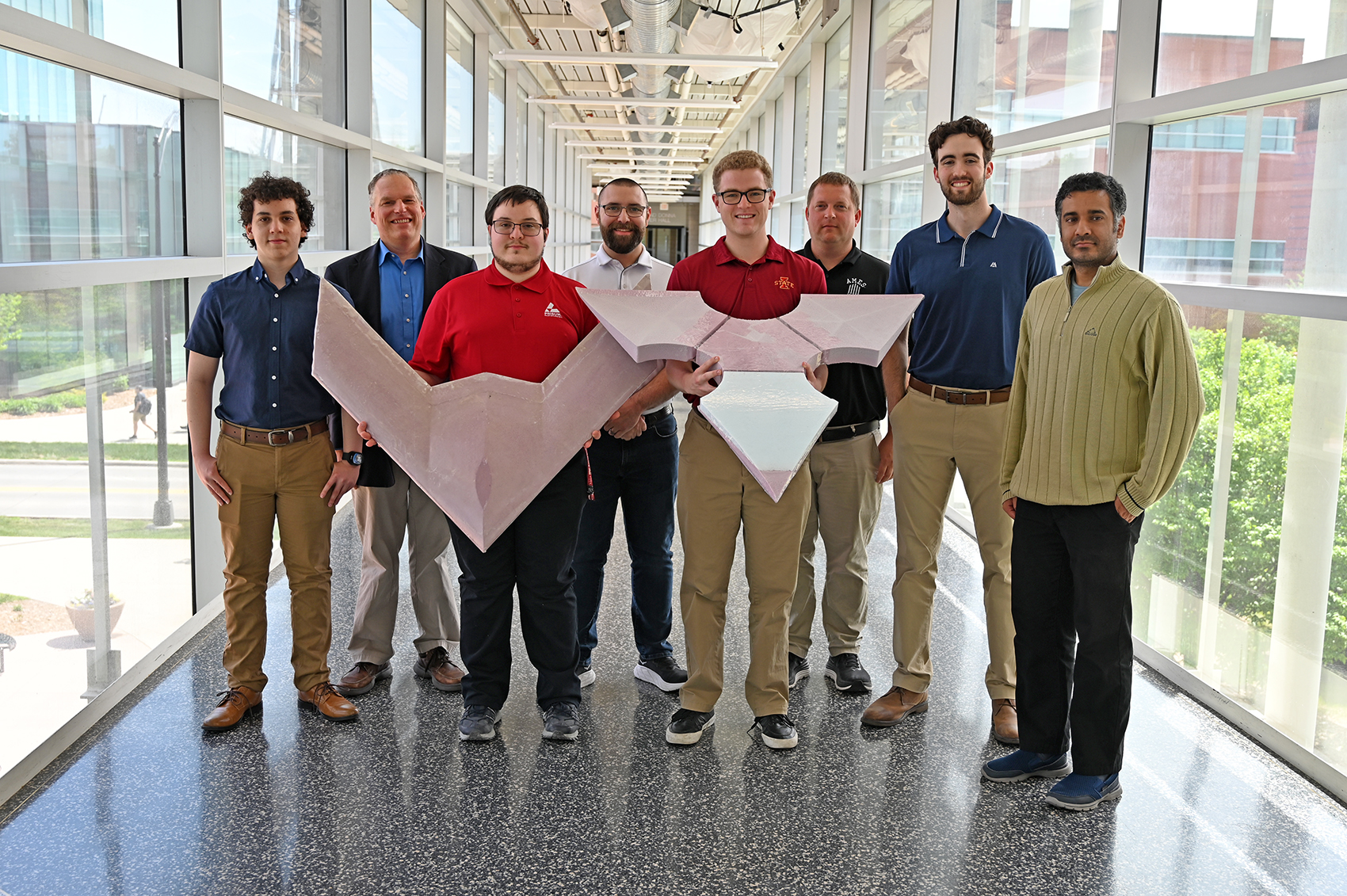Engineering students shape future of origami drone design
Author: Lani McKinney

Author: Lani McKinney

Some focus on learning how to fly drones. Iowa State engineering students spent the semester learning how to design them.
A team of IE 4530X: Engineering Problem Solving for Defense students did drone design work this semester in an elective course taught by IMSE associate professor Cameron MacKenzie — specifically on origami drones, a unique new drone design featuring wing folding and shape shifting.
For Jacob Roberts, industrial engineering senior graduating this semester, this was an exciting opportunity to do some problem solving and work with a team. The team was composed of several engineering undergraduates, representing three different majors and a different mix of skills and abilities.
Jacob worked alongside Burak Agun, industrial technology and aerospace engineering (team leader); Joseph Bermudez, aerospace engineering; Adam Haroon, mechanical engineering; and William Lawson, mechanical engineering on an origami drone design originally designed by the University of Missouri Kansas City with the Naval Surface Warfare Center (NSWC) in Crane, IN.
After studying the aerodynamics of the original origami design and determining it couldn’t fly when tested in Iowa State University’s wind tunnel, students moved the project forward by each designing their own.
Four new student prototypes were designed and tested over the course of the semester. End result? Burak’s protoype passed the test. Burak plans to continue refining and testing his prototype during the summer as part of the Defense Innovation Unit (DIU)-sponsored Maker program in collaboration with Zach Capron, graduate student in aerospace engineering, and Travis Grager, associate teaching professor in aerospace engineering.
DIU project sponsor Mike Seper, Regional Engagement Principal, told the team, “I was so impressed. You took a hands-on learning experience and definitely met goals. In fact, you exceeded them.”
And the students? “I loved that this didn’t feel like a lecture. I got to apply what I’ve learned so far with hands-on learning,” says William.
MacKenzie initiated this elective course at Iowa State as part of the Navy Engineering Analytics Program (NEAP), a unique program funded by the Office of Naval Research that is designed to teach engineering undergraduate students how they can apply their analytical and technical problem-solving skills to military and defense problems.
The Defense Innovation Unit links academic institutions with military organizations in order to foster innovation for defense and security solutions. They provided financial support for Iowa State to work closely with Dr. Corey Bergsrud, an engineer at Naval Surface Warfare Center (NSWC), during the semester to define requirements and share their results.
Instructors who advised students on this project during the semester include Grager, Capron, and Dr. Sidharth GS, assistant professor in aerospace engineering.
